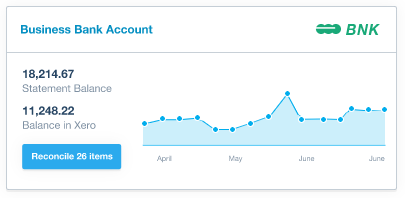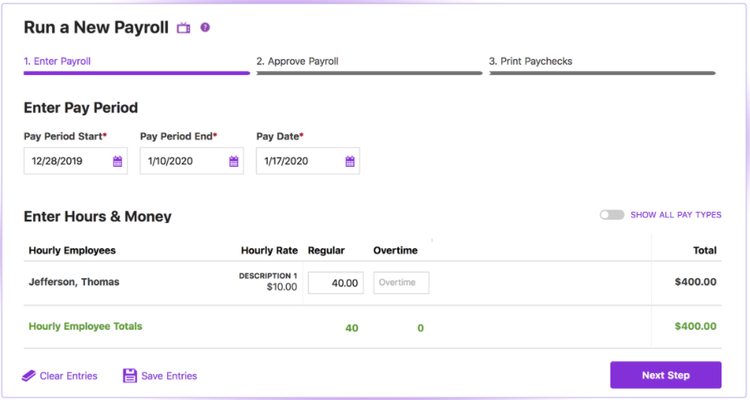How Much Does It Cost to Open a Restaurant?
Opening a restaurant can be a pricey endeavor. It costs over $1 million to open a popular fast-food franchise, and financing a fine dining restaurant can easily top that.
The average cost to open a restaurant is $375,500, according to a Restaurant Owners' survey. However, expenses will vary depending on location, size, and a range of other decisions you'll make along the way.
No matter what kind of restaurant you want to open, starting the process with the right budget will help you answer the question of how to work for yourself in the restaurant industry without breaking the bank.
6 costs you encounter when trying to open a restaurant
How much does it cost to start a restaurant? Expenses vary greatly, beginning with the type of concept you choose, but regardless of choice, you'll want to consider these six main startup costs:
- Commercial space and renovation
- Organizational and administrative
- Interior and exterior decor
- Kitchen equipment
- Inventory
- Technology
1. Rental space or purchased property will need renovations
You want the best location since it’s paramount to success, but it has to fit your budget. Starting from the ground up is incredibly expensive, but you’ll spend a pretty penny to remodel your space as well.
Essentially, you have two ways to secure commercial space:
- Lease: You'll need to negotiate the lease term and deposit amount. Expect to pay between $1.00 to $5.00 per square foot, with one to three months paid in advance as a deposit.
- Purchase: If you buy a commercial space, you should expect to pay a 15% to 35% down payment.
Once you secure a space, you will likely need to make some renovations before it's ready for customers. How much does restaurant renovation cost? Again, costs will vary depending on your restaurant's concept, target market, and commercial space condition. Prioritize, make smart choices, and work in stages. Concentrate on those things that will bring in revenue.
2. Build a team of professionals
Expert advice from architects, designers, and consultants are nice, but the essential professionals are a good lawyer, accountant, and insurance agent.
- Attorney: Forming a business and securing necessary licenses entails a lot of paperwork and legalities. An experienced lawyer can help with your business structure, contracts, and state and local permits. Expect to spend anywhere from $500 to $2,000.
- Insurance agent: The average cost for a business owner policy, including general liability and commercial property coverage, worker's comp, and liquor liability insurance, runs $4,300 annually. Look for an agent who understands the restaurant business, ideally a reference from someone you trust.
- Accountant or bookkeeper: It may be worth it to use a professional for your startup accounting as the initial setup can be daunting and time-consuming. Then move to a do-it-yourself (DIY) software program later, such as QuickBooks or Xero. Expect to pay around $500 for an initial setup and $25 to $150 per hour for ongoing services.

Quickly reconcile accounts using accounting software, like Xero. Image source: Author
3. Choose your aesthetic
The ambiance you create inside and outside your restaurant sets the mood, but be cautious, costs can quickly run out of control.
Items to consider when planning your business budget:
- Interior items: Tables, chairs, barstools, lighting, and cohesive design elements.
- Exterior items: Signage, lighting, landscaping, and outdoor seating if applicable.
Depending on your space and theme, expect to pay $5,000 to $80,000 for interior and exterior furnishings and decor.
4. Don't overspend on equipment
Starting from scratch, you could spend up to $150,000 for a large setup. Many restaurants can overpay when it comes to purchasing equipment. One way to save money is to look for used equipment from a closing business or a used equipment store. Quality used equipment can save you some much-needed capital.
Items you may need include:
- Kitchen equipment: Stoves, ovens, refrigerators, freezers, and dishwashers.
- Cooking equipment: Meal prep tools such as pots, pans, cutting boards, strainers, and knives.
- Workspaces: Your restaurant's counters, prep tables, cold food tables, and steam tables.
- Bar equipment: Bar items such as mixers, shakers, ice machines, pour taps, jiggers, and glassware.
- Service equipment: Serving supplies such as trays, menus, and aprons.
5. Stock your restaurant pantry
You'll need plenty of inventory to get you through your opening period, including a full bar, food, plates, soft drinks, cups, water pitchers, to-go boxes, napkins, and condiments. Contact local food and liquor vendors to determine your initial cost.
6. Stay efficient with the right technology
The better your technology, the better your restaurant will run. Start with a reliable point-of-sale (POS) system and, depending on your budget, a handheld POS system for faster turnover and better restaurant customer service.
Technology providers have different pricing models. Legacy systems usually have flat rates that can run into the six-figure range, while more modern POS providers have more cost-effective monthly fees.
Expect to spend at least $1,000 purchasing new hardware for your restaurant and about $200 each month for software maintenance and licensing.
5 ongoing restaurant costs to work into your opening plan
The widespread belief that 90% of restaurants fail in the first year is a false narrative. In a 2014 study, two economists tracked single-establishment restaurants from 1992 to 2011 and found only 17% fail in the first year. The average lifespan of a new restaurant is 4.5 years.
Analyzing restaurant startup costs is essential but keeping a handle on your monthly restaurant expenses is the key to longevity. Make an initial budget based on your estimates, then revisit it quarterly, adjusting to reflect the actual numbers.
1. Evaluate your occupancy expenses
Costs related to your space should comprise no more than 8% to 10% of your gross revenue. These costs include rent or mortgage, property tax, utilities, insurance, and maintenance.
2. Don't let payroll get out of control
A good rule of thumb is to keep payroll costs between 20% to 30% of gross revenue. A good manager will help keep these costs in line with proper oversight and scheduling.
You can run your restaurant payroll using various software programs, such as Patriot Payroll or OnPay. But using a payroll company will save you time and hassle, which can equal significant savings.

Balance the cost of payroll software, like Patriot Payroll, with the benefits of an intuitive dashboard to quickly run a new payroll. Image source: Author
3. Keep your food and beverage costs in check
Anything you use to prepare a final product is the 'cost of goods sold' or 'cost of sales,' including food, drink, and pantry items. Statista reports that the average cost of sales for restaurants in 2017 was 29%. Anything under 31% is ideal.
4. Cost-saving marketing ideas for your restaurant
You're not fully in business until you have a website. Start on this early so you can work out any kinks before you open. The last thing you want is a restaurant website that doesn't function. Hiring a web designer can cost big bucks, and if you have them to spend, it might be well worth it. But, if you're on a budget, there are plenty of DIY options that run a fair $50 to $200 per month.
Large marketing firms come with an equally large price, but all you need is a strong and consistent social media presence. Assigning social media management to a member of your staff can help generate business at a low cost. Adding $200 per month to a staff member's pay to run your restaurant's social media is an excellent option for low-cost restaurant marketing.
5. Budget money for training
A good training onboarding and training program sets the stage for excellent customer service. While you can develop your own training framework, it’s important to set aside money for employee trainers, whether that’s a slightly higher hourly rate or another form of compensation.
Go the distance with the right restaurant cost breakdown
Your concept and the choices you make along the way will determine your startup costs along with the type, size, and location of your restaurant. It's possible to get started for as little as $10,000 or spend over $2 million. Either way, it's crucial to keep some capital in reserve for unanticipated expenses.
Poor budgeting and a lack of planning have sunk many restaurants. If you stick to your budget and set money aside for emergencies, you'll be able to handle the unexpected and focus your attention on growth and prosperity.
Alert: our top-rated cash back card now has 0% intro APR until 2025
This credit card is not just good – it’s so exceptional that our experts use it personally. It features a lengthy 0% intro APR period, a cash back rate of up to 5%, and all somehow for no annual fee! Click here to read our full review for free and apply in just 2 minutes.
Our Research Expert
We're firm believers in the Golden Rule, which is why editorial opinions are ours alone and have not been previously reviewed, approved, or endorsed by included advertisers. The Ascent does not cover all offers on the market. Editorial content from The Ascent is separate from The Motley Fool editorial content and is created by a different analyst team.
Related Articles
View All Articles